A river cruise on the Danube is a magnificent journey that allows travelers to explore the heart of Europe while enjoying the comfort and luxury of a floating boutique hotel. Last year we were able to experience a river cruise on the main section Danube with some friends. When you book a river cruise, there is a short 1 ½ – 2 hour walking tour at each stop that is included in the price. This allows you to get a snapshot of the city and then you have time to explore on your own or make plans to see something specific.

Passau, Germany
We boarded and over-nighted in Passau. This is a beautiful town located in the southeastern part of Germany, known for its charming old town and its unique location at the confluence of three rivers: the Danube, Inn, and Ilz. A walking tour of Passau allowed us to explore its rich history and cultural heritage.
We walked from the boat to Rathausplatz (Town Hall Square), where we learned about the Passau Town Hall (Rathaus) with its impressive baroque façade. On the side of the building they have marked different years and water levels when the city has flooded. We then went to St. Stephen’s Cathedral (Stephansdom), also known as the Passau Cathedral. This is one of the city’s most iconic landmarks, known for its magnificent organ and beautiful interior. The cathedral’s observation deck has impressive panoramic views of Passau.
After the Cathedral, we walked to Residenzplatz, which is a picturesque square with colorful buildings and a lovely fountain. This area is a great place for photos and people-watching. Then, after spending some time there, we walked up the hill to Veste Oberhaus, a fortress that offers fantastic views of Passau and the surrounding countryside. A visit to the Mariahilf Monastery was next. This is a picturesque church overlooking the Danube. The view from the monastery terrace is particularly stunning. Dreiflüsseeck (Three Rivers Corner) is where we finished our tour. Here you can see the distinct colors of the Danube, Inn, and Ilz rivers merging. We enjoyed the sights, sounds, and flavors of this charming Bavarian town.
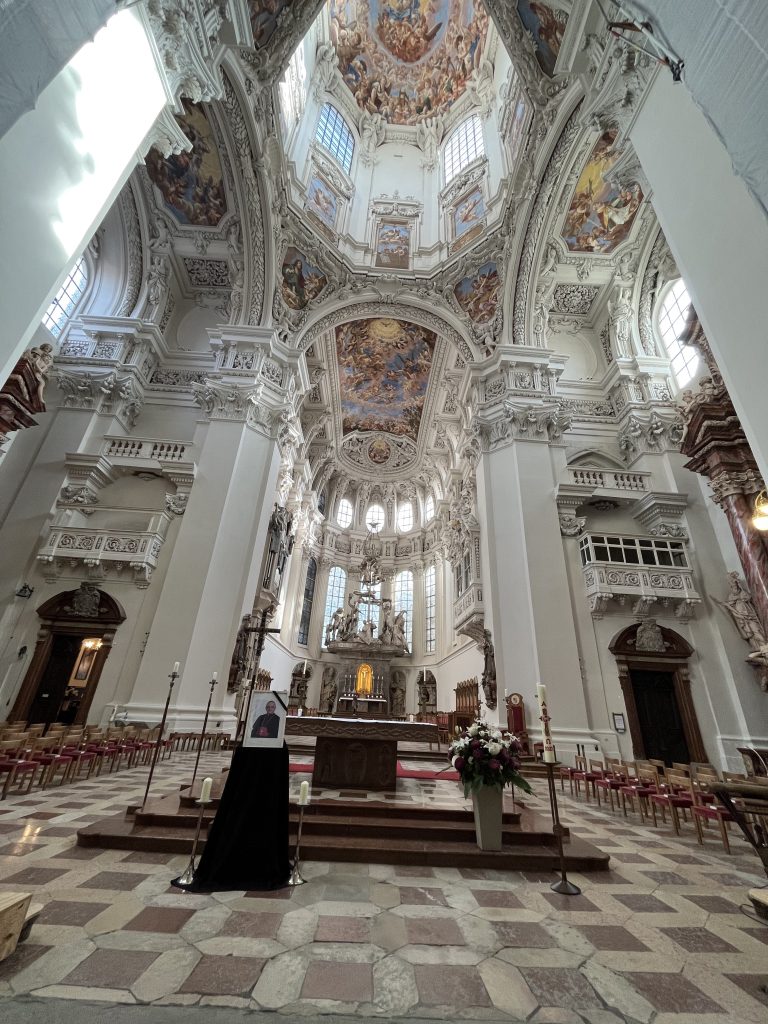
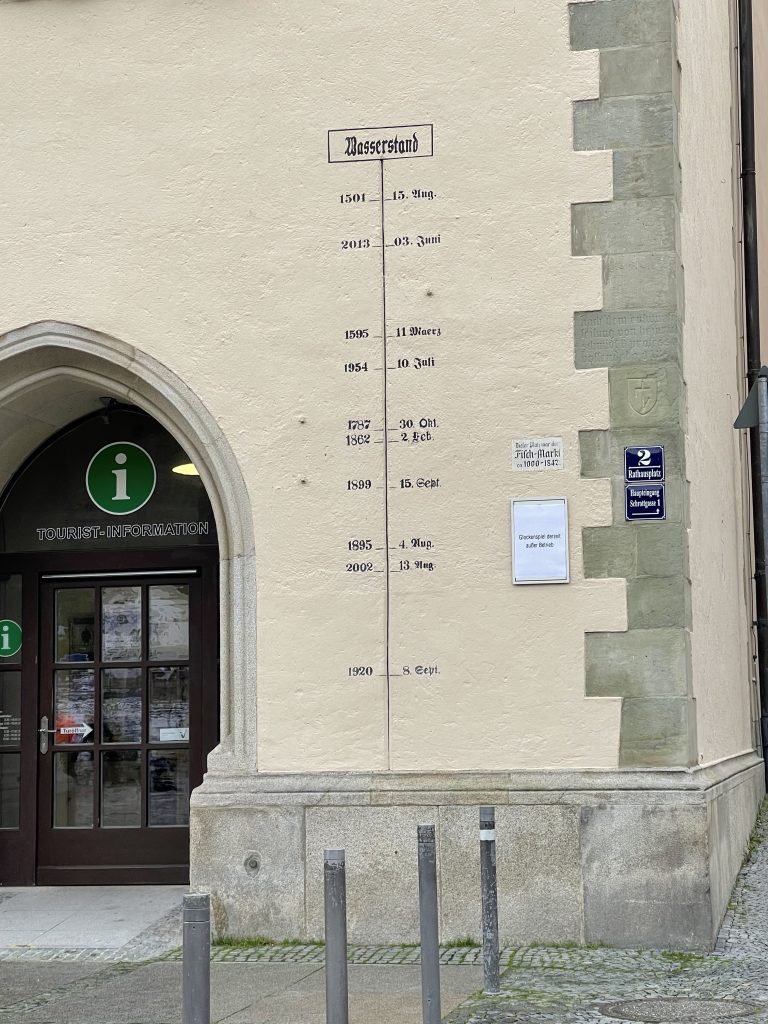
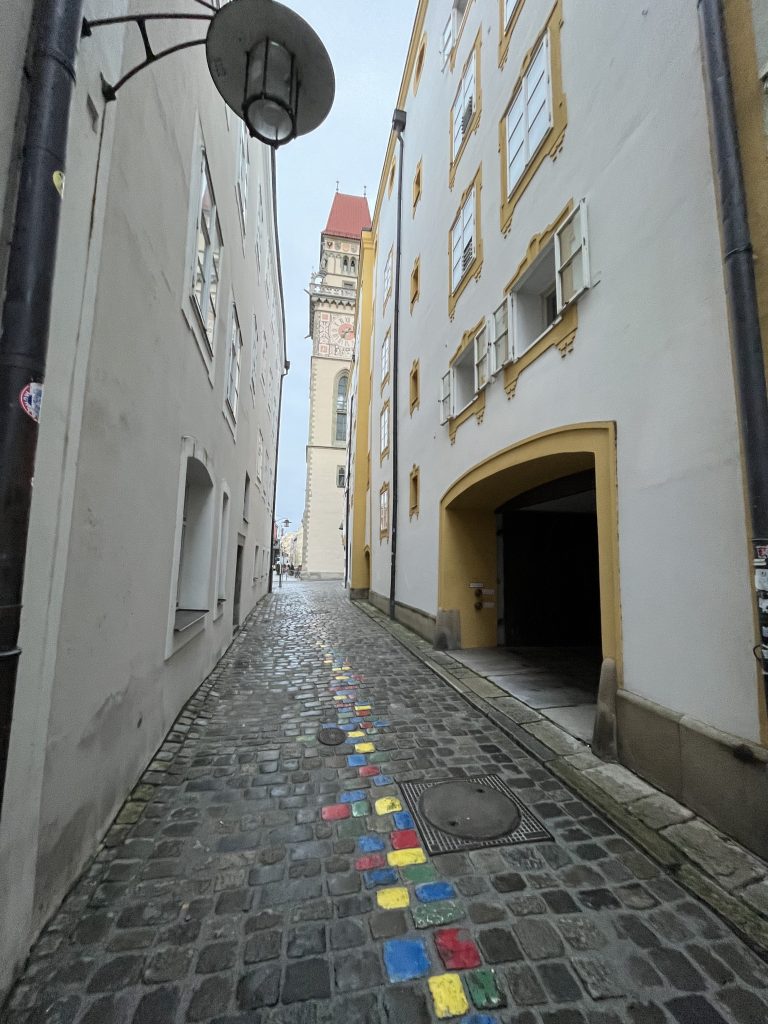
Linz, Austria
Linz, Austria’s third-largest city, is a delightful blend of historic charm and modern innovation. A walking tour of Linz will take you through its picturesque old town, along the Danube River, and to several cultural attractions. Here’s what we saw on our walking tour of Linz:
We started at Hauptplatz (Main Square) where we saw the baroque Trinity Column (Dreifaltigkeitssäule) at the center of the square and the colorful facades of historic buildings that surround it. Next we took a stroll down Landstraße, Linz’s bustling pedestrian shopping street. There were many cute boutiques, cafes, and restaurants that lined the street. Our tour guide then took us to Lasudhauspark. This magnificent renaissance building was erected in the 16th century on the site of the Monastery of the Friars Minor and is today the seat of the Upper Austrian provincial government. The lower part of the tower dates back to 1568, the upper part having been added in 1638. Our next stop was the Alter Dom, or Old Cathedral, which dates back to the 17th century. Its striking pink and white façade is a noteworthy landmark. You can also explore the interior and appreciate its baroque design. There was a beautiful view from there. Moving on, we took a walk along the riverside to reach the Linz Castle (Linz Schloss) and the associated museum. This historic site offers insight into Linz’s history and houses a diverse collection of artifacts.
Later our tour took us to the Cathedral of Immaculate Conception (New Cathedral). Particularly noteworthy are the cathedral’s stained glass windows. The most famous is the Linz Window, which depicts the history of Linz. The windows also contain portraits of the various sponsors of the church’s construction. During the Second World War some windows, particularly in the southern part of the cathedral, were damaged. Instead of restoring the original windows, they have been replaced with windows displaying modern art.
After the tour ended we decided to take the Pöstlingbergbahn, a historic tram, up to Pöstlingberg. At the top, there is a pilgrimage basilica and breathtaking views of Linz and the surrounding region. We saw the beautiful interior and walked the basilica grounds where they have some reindeer living in a large fenced area. Adjacent is where Grottenbahn and Fairy Tale World are located. If you’re traveling with children or enjoy whimsical attractions, the Grottenbahn and Fairy Tale World in Pöstlingberg are delightful options. This underground train ride takes you through a fairy-tale world of animated scenes. This historic old town and it’s cutting-edge art and technology make Linz’s blend of tradition and innovation a unique experience for visitors.
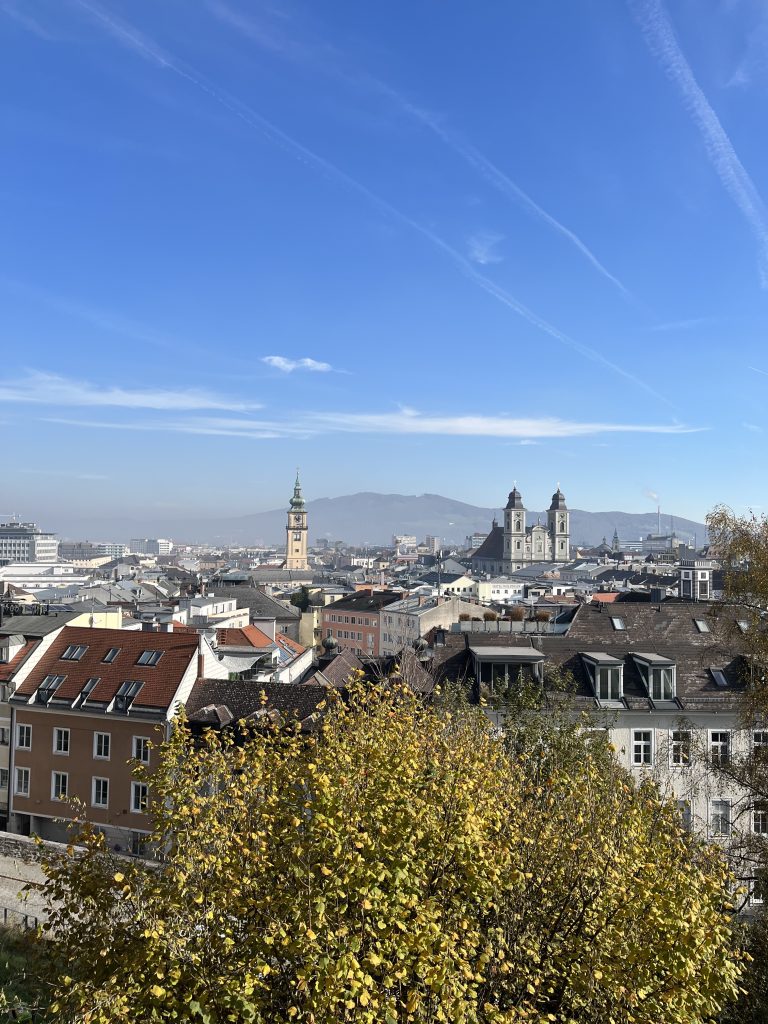
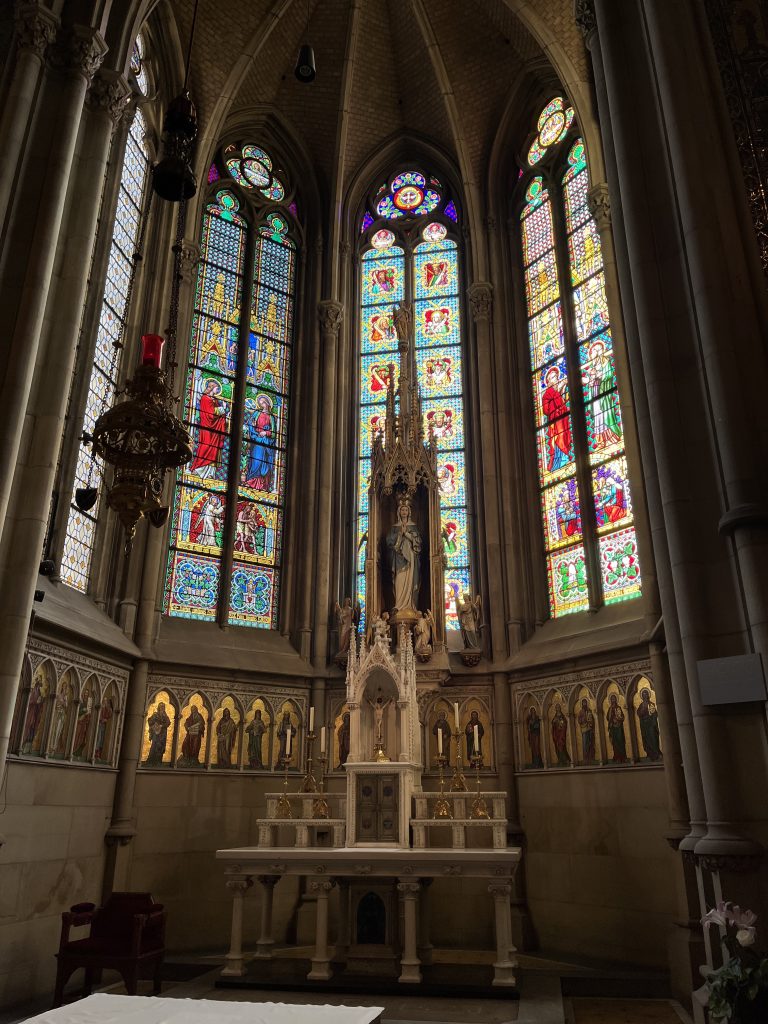
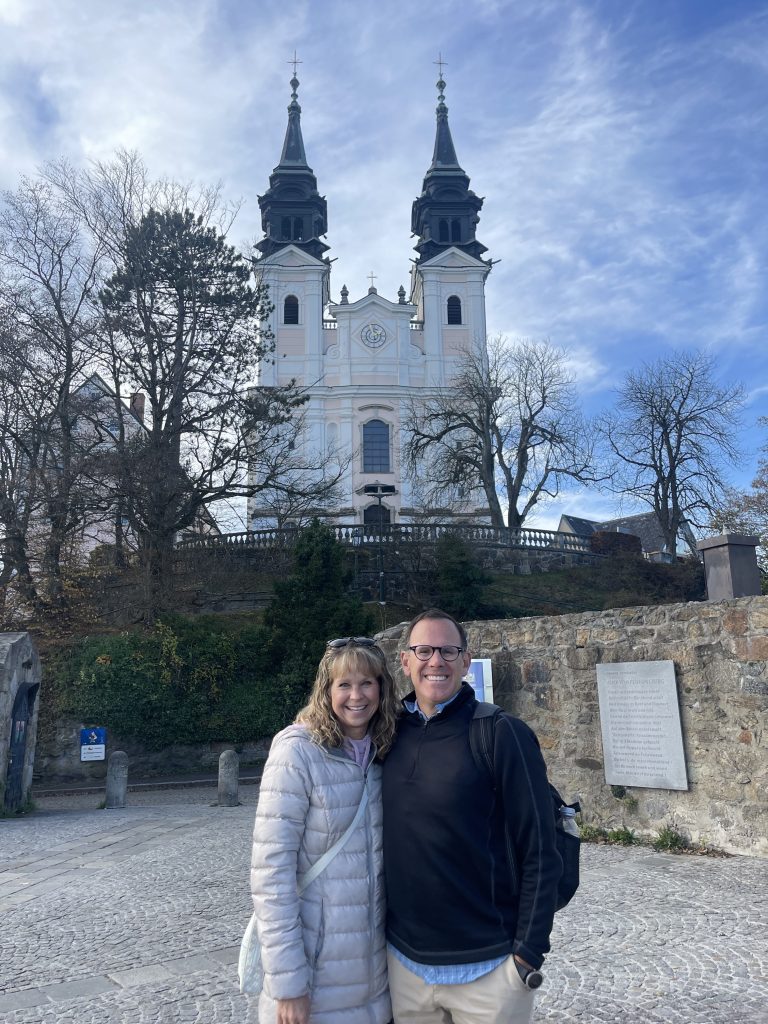
Krems, Austria
In Krems we took buses to Stift Gottweig. This is a beautiful Benedictine monastery located on a hill overlooking the Wachau Valley near Krems. It’s a remarkable place with a rich history and stunning architecture. The imposing façade of the monastery and its grand entrance set the tone. The baroque architecture and the well-tended gardens create a peaceful and picturesque atmosphere. The highlight of Stift Gottweig is its church. It has a stunning baroque interior, including the ornate altar, beautiful frescoes, and the organ. If the monastery allows access to its library, be sure to visit it. There are panoramic views of the Wachau Valley. The climb may be steep, but the views are well worth it.
After our visit to Stift Gottweig, we returned to Krems and explored the town in the evening. Krems is known for its charming old town and wine culture, making it a pleasant place to spend an evening. There were fun shops and restaurants that we walked past. Krems offers a relaxed and enjoyable evening experience, with its welcoming atmosphere and scenic surroundings. It’s a perfect way to unwind after exploring Stift Gottweig and the Wachau Valley.
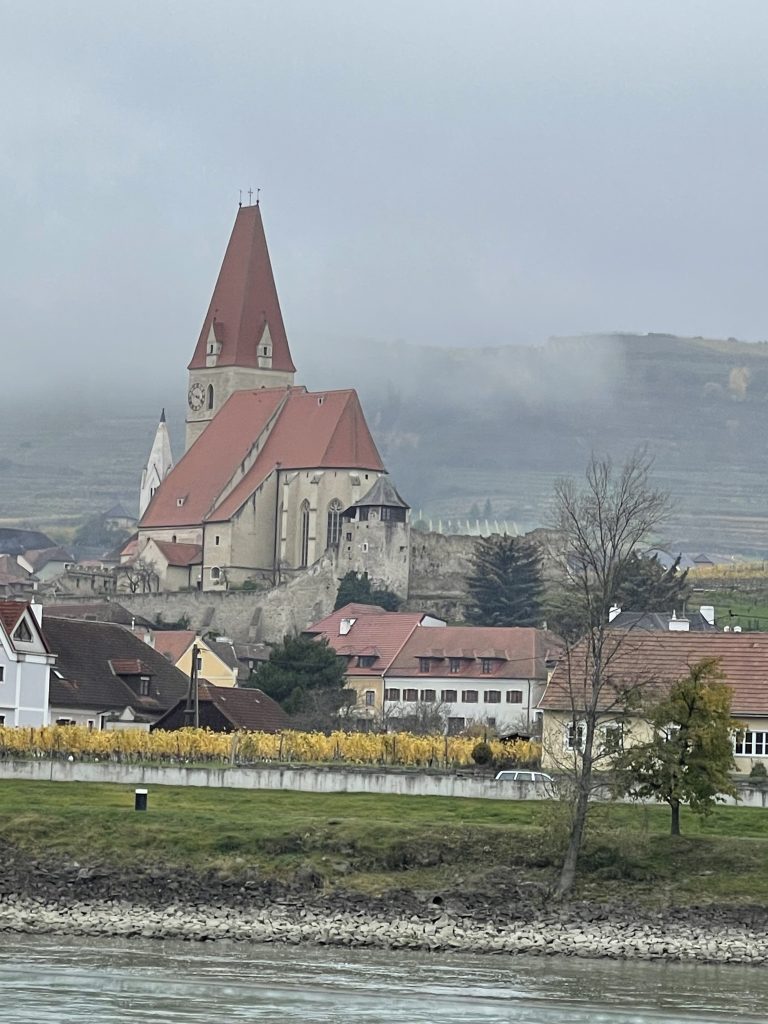
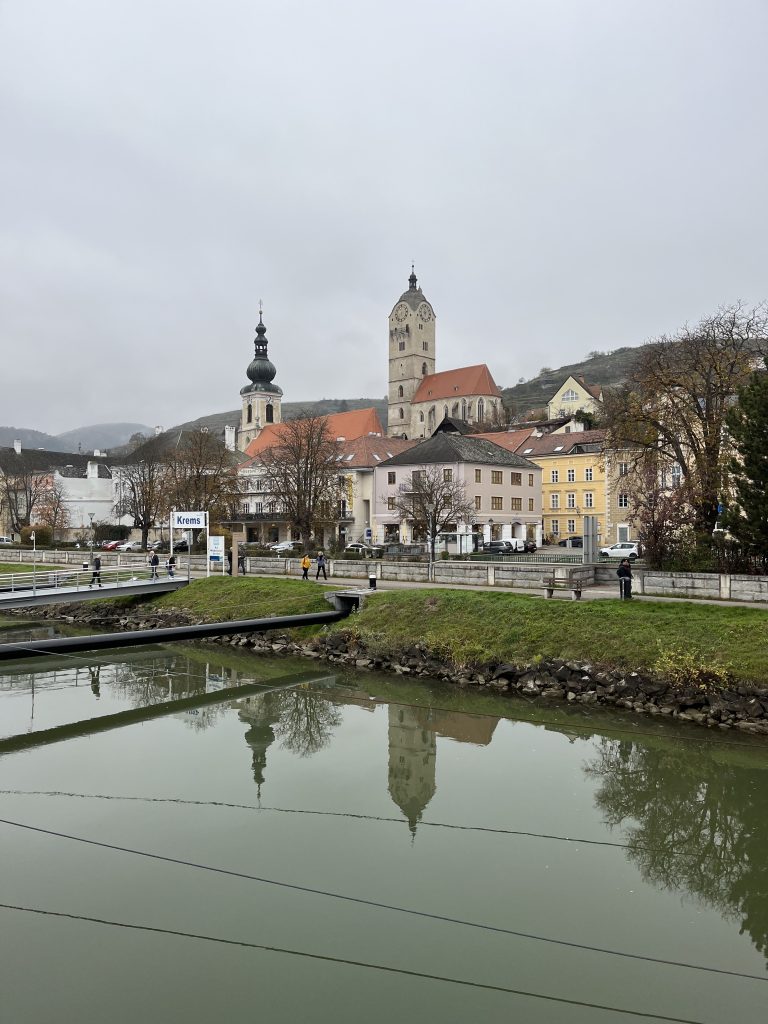
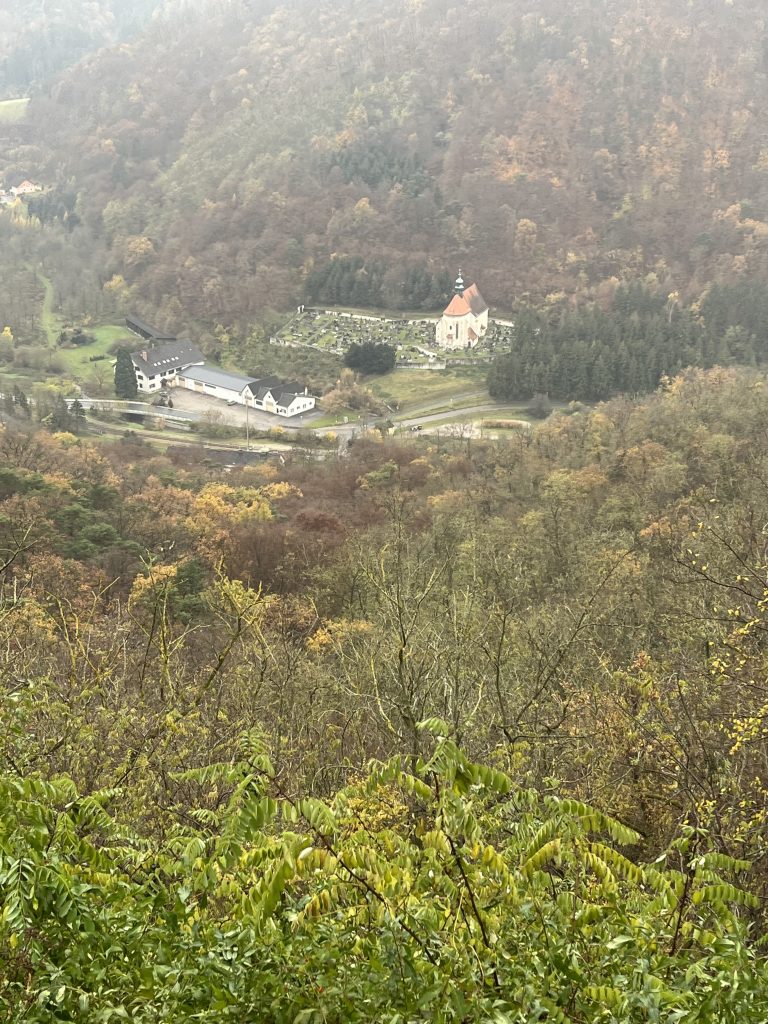
Vienna, Austria
In Vienna, we began our day in Vienna at the Opernviertel, the area surrounding the Vienna State Opera (Wiener Staatsoper). The architecture of the opera house is stunning and is one of the world’s most renowned opera venues. If you have time, consider taking a guided tour of the opera house to learn about its history and architecture. Nearby is Karlsplatz, a large square with several interesting features. You’ll find the Karlskirche (St. Charles’s Church), a baroque masterpiece, at one end of the square.
Our Viking tour guide then took us to Stephansplatz, Vienna’s central square. St. Stephen’s Cathedral (Stephansdom), is an iconic Gothic masterpiece. We were able to explore the interior, including the catacombs and the stunning views from the South Tower. The roof has a distinct pattern that is very different from other cathedrals we’ve seen in Europe. There is an elevator that will take you to the roof where you can see stunning views of Vienna.
We decided to take the metro (U-Bahn) from the Stephansplatz station to Schönbrunn Palace. The U4 line is the one you want to take.The magnificent Schönbrunn Palace, a UNESCO World Heritage Site is amazing. We took an audio tour of the opulent rooms of the palace, including the Imperial Apartments, and then took a stroll through the massive, beautiful gardens. The Gloriette at one end of the gardens offers a panoramic view of the palace and its surroundings.
When we were done at Schonbrunn, we took the metro back to Resselpark, located near Karlsplatz. It’s a lovely park with greenery and sculptures, providing a tranquil escape in the heart of Vienna. They were setting up for the Christmas Market, which we missed by just a few weeks. One of the many reasons to return! (We learned that Christmas Markets in each town along the Danube usually run from about the 3rd week of November to mid-Jaunary.)
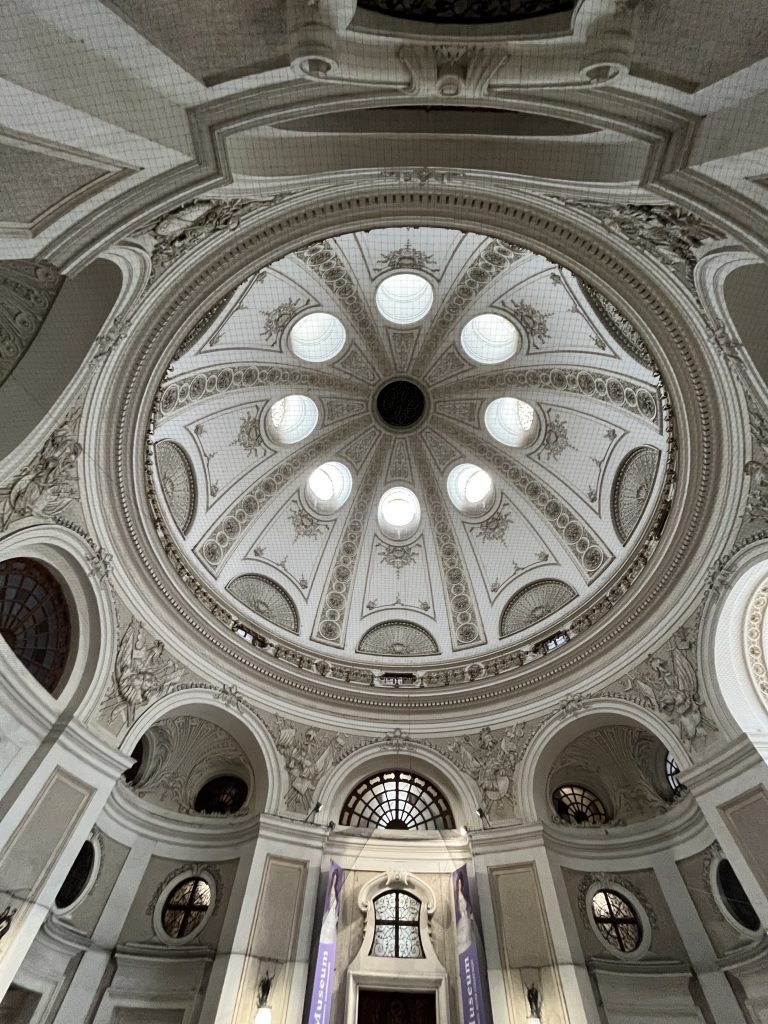
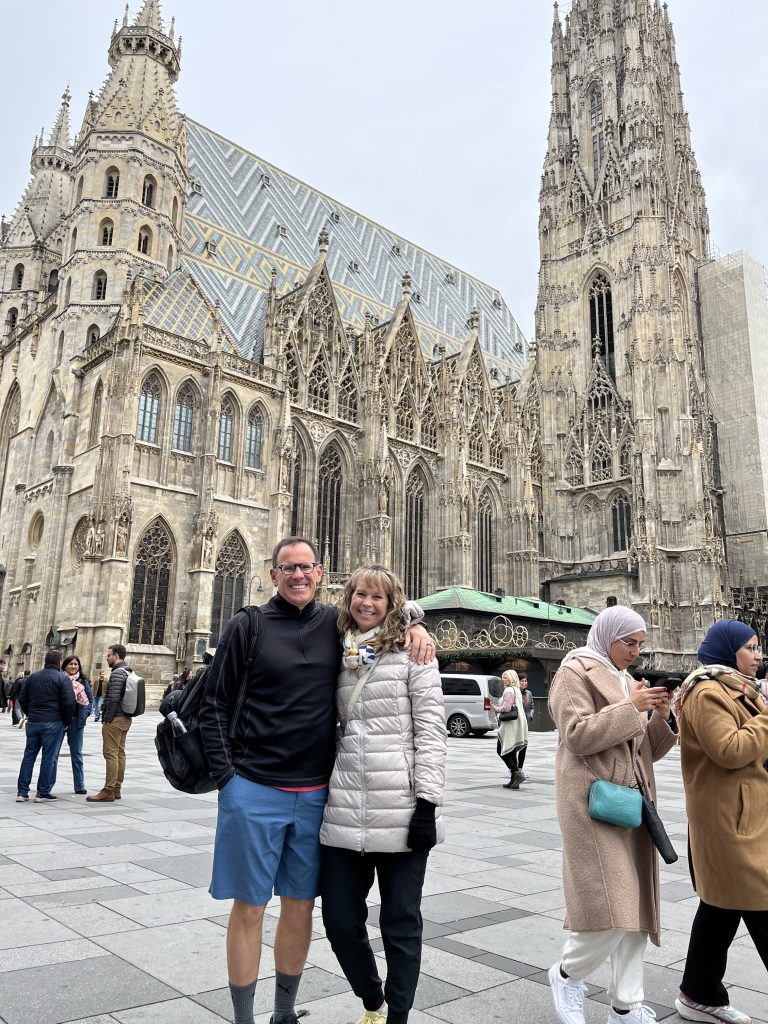
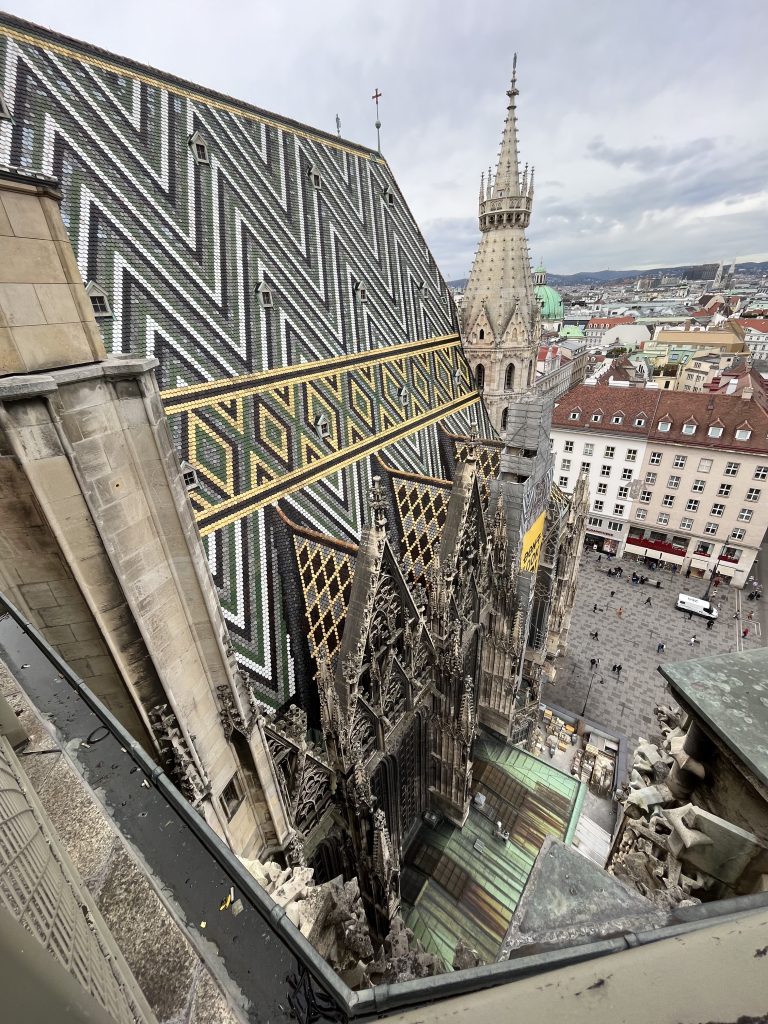
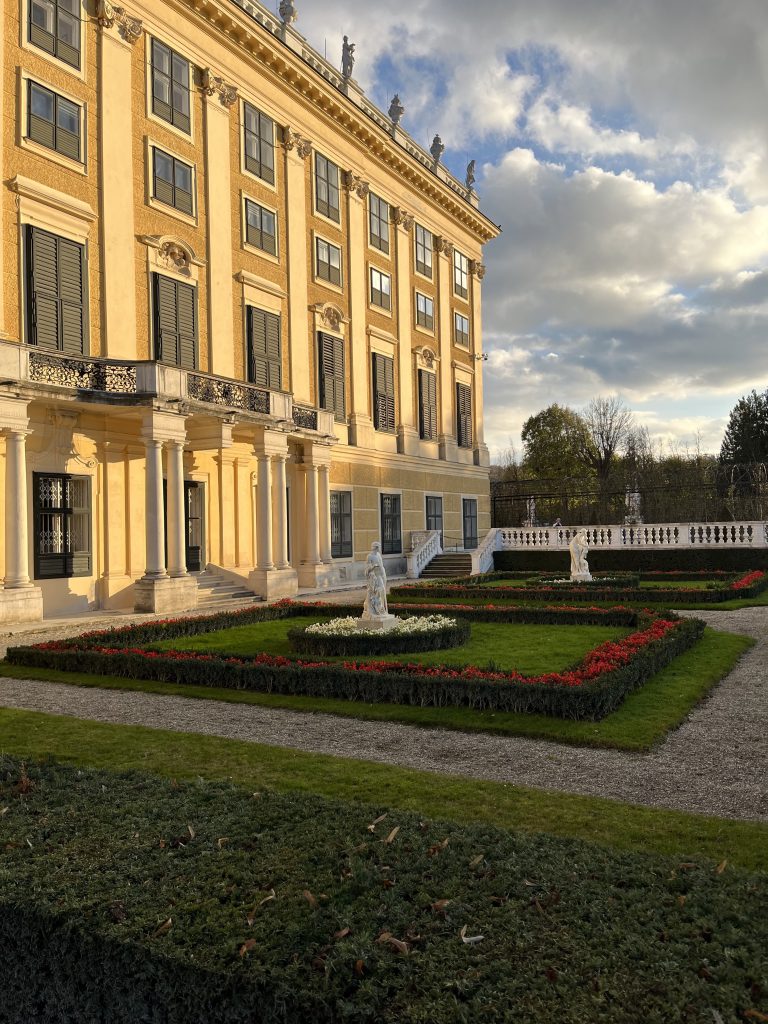
Bratislava, Slovakia
Our walking tour of Bratislava, the capital of Slovakia, encompassed a mix of historical landmarks, cultural attractions, and charming old town streets. We started at the Slovak Philharmonic (Slovenská filharmónia), a prominent cultural institution housed in a stunning neo-baroque building along the Danube River. We then took a walk along the Danube Promenade (Dunajské nábrežie), which offers beautiful views of the river, the Bratislava Castle, and the UFO Tower across the river. Namestie Eugena Suchona (Eugen Suchon Square), was the next stop on our tour. This is a charming square named after the Slovak composer Eugen Suchon. There are many statues and interesting architecture in the square, which often hosts open-air events and concerts. Next we walked to Hviezdoslav Square (Hviezdoslavovo námestie), one of the city’s main squares and a hub of cultural and social activities. Here, you’ll find the historic Slovak National Theatre and the statue of Pavol Országh Hviezdoslav, a renowned Slovak poet.
In the afternoon we explored the historic Old Town. We had a great time wandering through the narrow, winding streets lined with colorful buildings, shops, and cafes. Be sure to visit Michael’s Gate (Michalská brána), the only preserved gate from the medieval city walls. We also stopped at St. Martin’s Cathedral (Katedrála svätého Martina), a beautiful Gothic cathedral known for its stunning interior and impressive exterior.
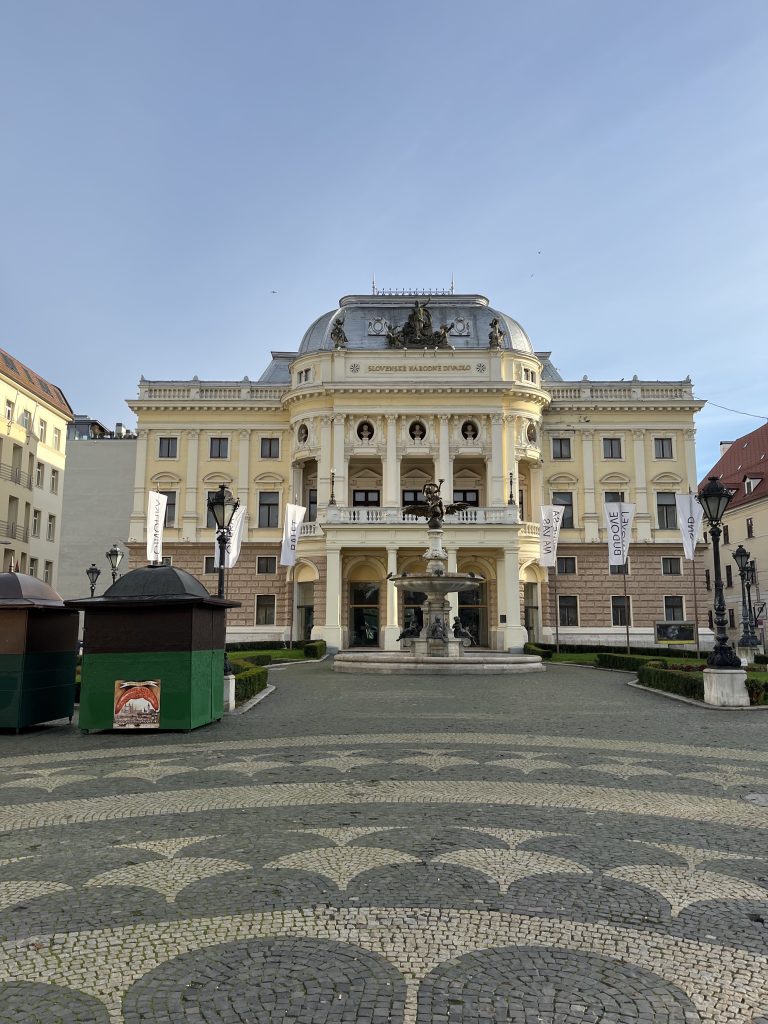
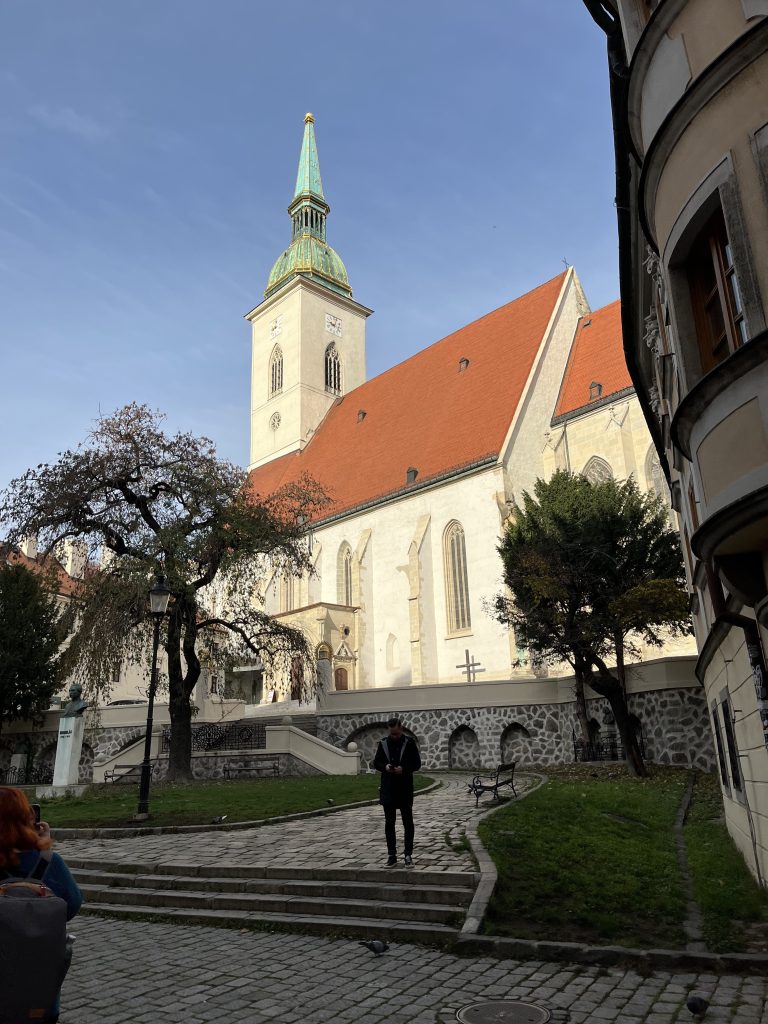

Budapest, Hungry
We were very excited to visit Budapest, since we had heard so much about it! We were happy that our river cruise ship over-nighted in Budapest so we could enjoy the city for 2 days. We took a bus past Hero’s Square. This is a grand square surrounded by statues of Hungarian historical figures and the Museum of Fine Arts (Szépművészeti Múzeum). We visited this square on foot the next day.
Our bus then took us to Fisherman’s Bastion (Halászbástya), which is a terrace with fairy-tale-like towers and breathtaking views of the river and Budapest. It’s a fantastic spot for photos. Near there is Buda Castle and Matthias Church. Buda Castle (Budavári Palota), a UNESCO World Heritage site that sits atop Castle Hill. We were able to explore the castle complex, including the Royal Palace and its museums. Adjacent to Buda Castle, visit Matthias Church (Mátyás-templom), a stunning example of Gothic architecture. It’s hard to miss the beautiful colorful ceramic tiles on the roof. We got lucky enough to be there when a children’s choir was practicing. It sounded amazing and really added to the atmosphere of this beautiful church.
In the evening, we went to the City Park (Városliget) to see the Vajdahunyad Castle and to go to the famous Széchenyi Thermal Bath. This is one of Europe’s largest thermal baths but we made the mistake of going on a Saturday evening when it felt a bit like everyone else had the same idea. It was very crowded and not particularly fun because of the crowds but cool to see none-the-less. We’ve heard weekday mornings are a much better time to visit the thermal baths.
The next day we went to see the impressive Hungarian Parliament Building. Since it was Sunday, the building was closed to visitors but our son tells us it is one of the coolest buildings he’s ever been in. Not far from there is a sculpture that serves as a memorial of Jews who were murdered on that spot During World War 2. Sixty pairs of shoes mark the site where fascist Arrow Cross militiamen shot Jews and threw their bodies into the river in 1944 and 1945. They were ordered to take off their shoes (shoes were valuable and could be stolen and resold by the militia after the massacre), and were shot at the edge of the water so that their bodies fell into the river and were carried away. The memorial represents their shoes left behind on the bank. There’s a very somber and respectful feeling there.
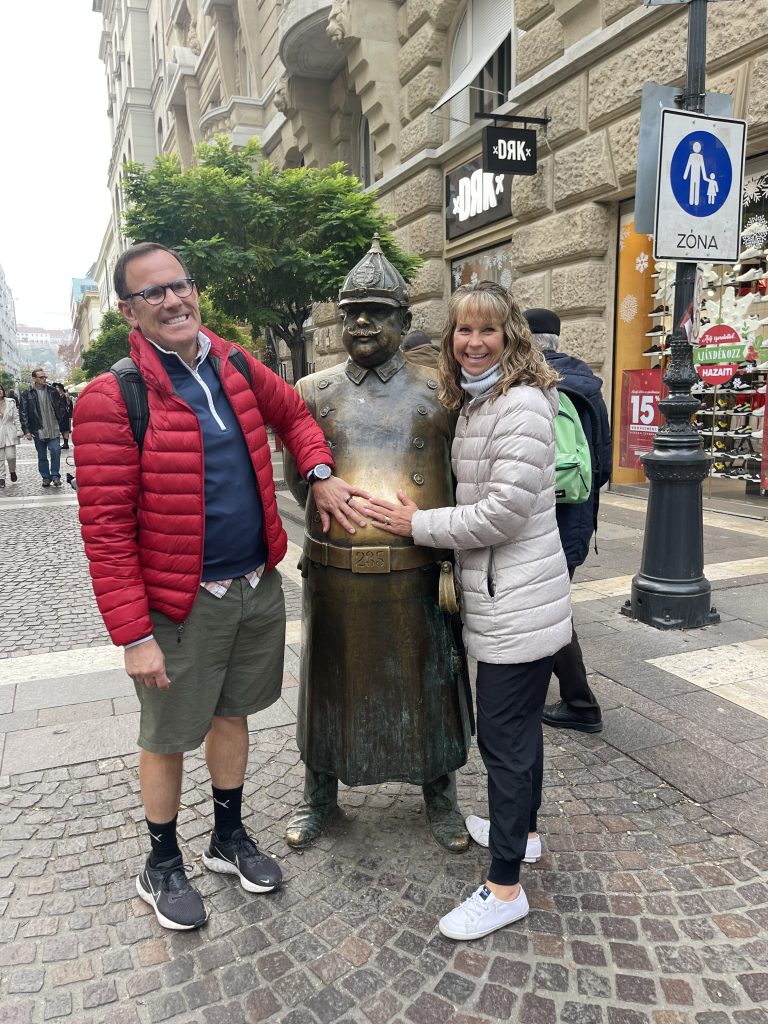
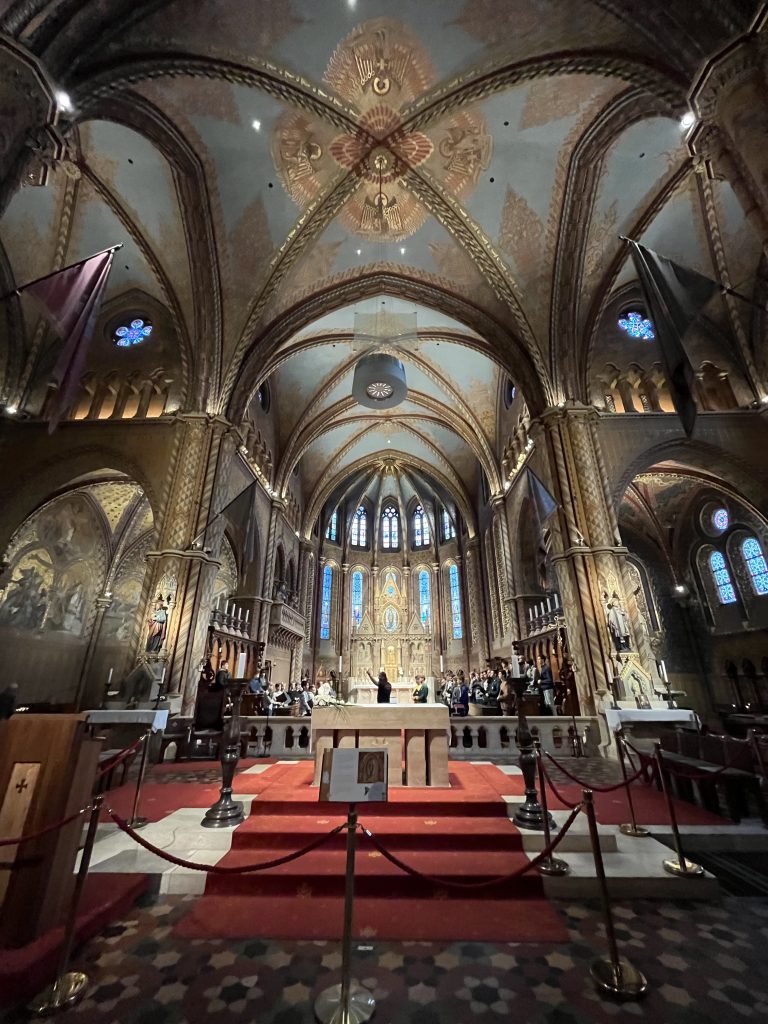
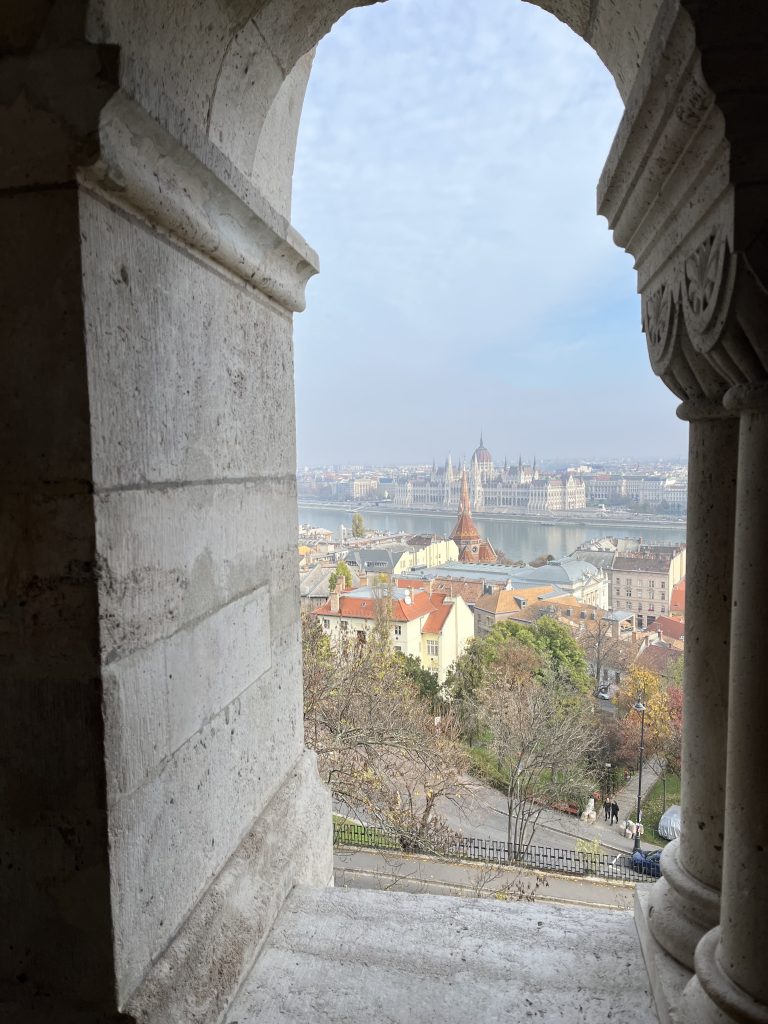
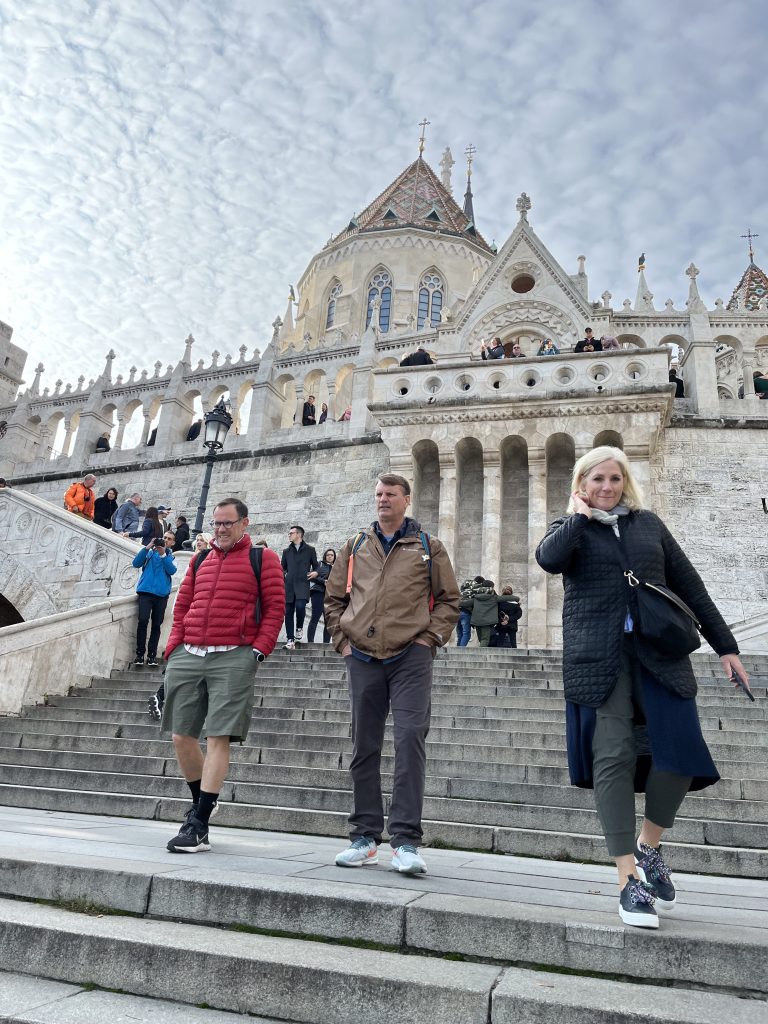

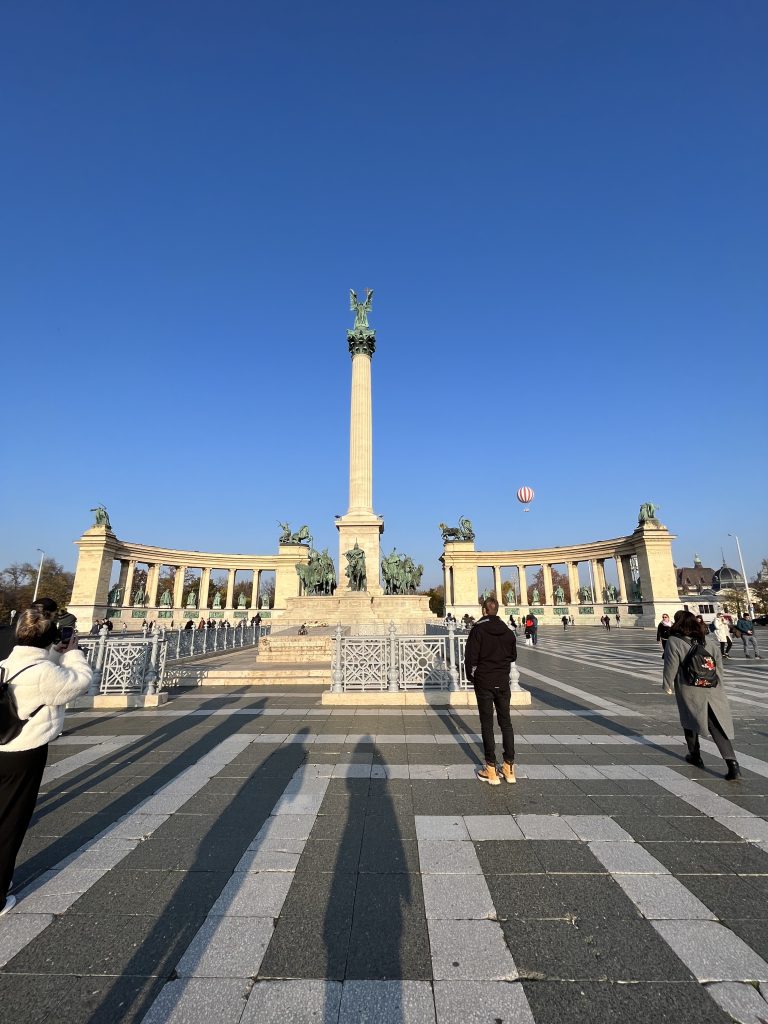
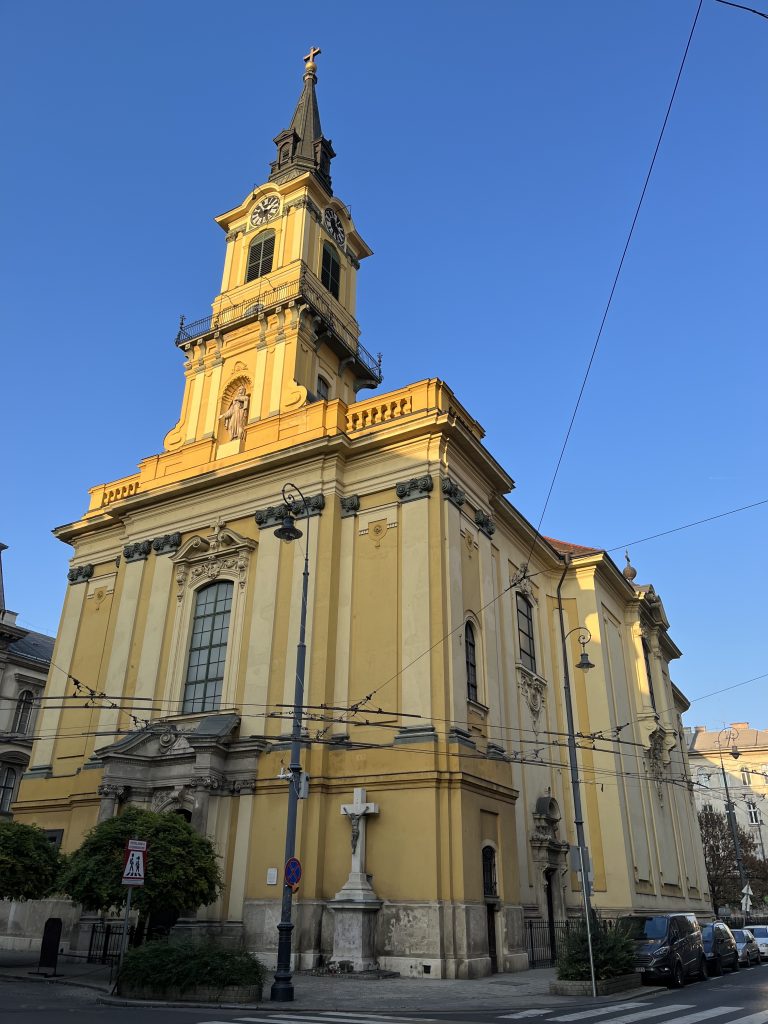
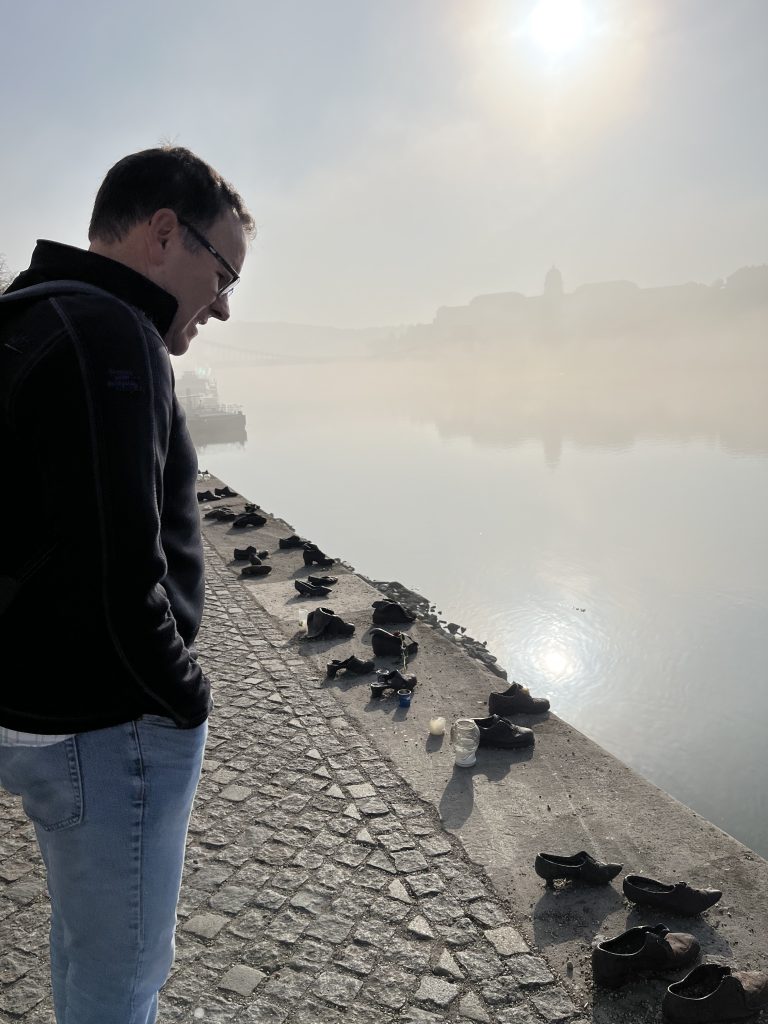
We enjoyed seeing the stunning views on our river cruise along the Danube where the riverbanks are adorned with charming villages, historic castles, and lush vineyards. The locks, which are used to enable vessels to overcome the differences in height along the river, were fascinating to watch. It’s a remarkable way to experience several cities in Europe within a week’s time. We hope to make it back soon to take a river cruise to other parts of the Danube!
